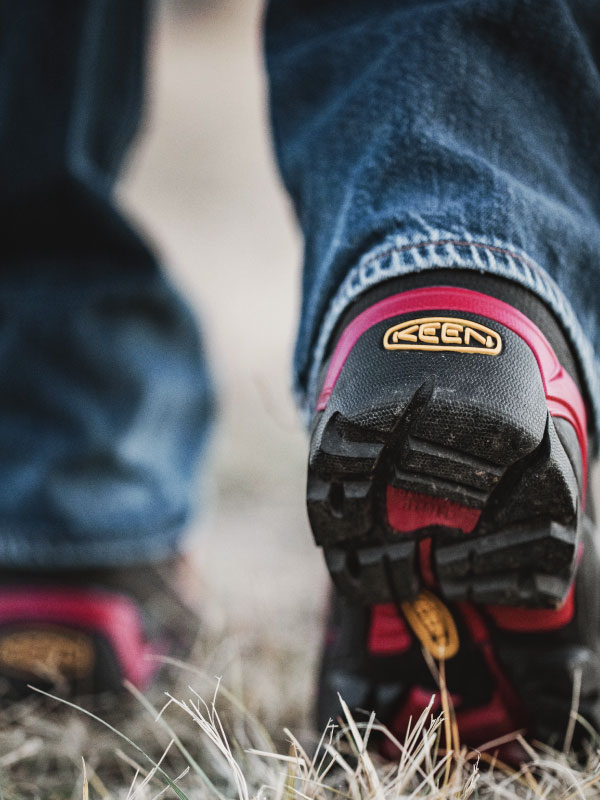How to Choose Lightweight Hiking Boots

Summer is in full swing. The sun is warm and the air is fresh. It's a great time to be outside. So, you're on the hunt for the perfect pair of lightweight hiking boots for those beginning hikes, but you don't know exactly where to start.
In #AskNorth40 Ep. 26, we contacted Matt Lewis with the Alta Group, which represents some of our favorite brands like Oboz footwear. Matt, a Mainer in Montana, is an Outdoor Industry veteran. First, we asked Matt to give us a definition of a lightweight boot.
13 Ounces or Less
According to Matt, lightweight boots are exactly as they sound: lightweight. He continues, "typically, the boots are low or mid top." Low cut boots, for example, weigh less and can be more flexible. North 40 Buyer, Kayla Williams, adds lightweight boots tend to, "weigh 13 ounces or less per boot." The Oboz Sawtooth Hiker is a great example of this.
Now that we have a working definition of a lightweight boot, we need to know how to choose the best lightweight hiking boot for beginning level hikes. Matt begins with the fit of the boot.


A Roomy Toe Box
Matt is clear to point out that fit is the most important factor when choosing lightweight boots because, "a properly fitted shoe will be more comfortable and you will be less likely have to deal with blisters." Wearing lightweight socks like Darn Tough can help prevent blisters too. He continues that lightweight hiking boots should feel, "snug in the heel with a roomy toe box. You do not want your foot to be moving around the shoe with each step."
Low, Mid, or High
Matt then focuses on the height of the boot: low, mid, or high. Meaning, "A mid-top boot can be a good option for those wanting more support than (found) in a low top shoe." Of course, this is going to add to the weight of a boot. As mentioned earlier, if you don't have any ankle issues, Kayla points out that lower cut boots, "tend to be more flexible." Flexibility can be an advantage, in that, flexible boots can be more comfortable. However, flexibility can be a disadvantage on uneven terrain and when carrying a heavy pack. In this situation, you'll want a less flexible boot to help support your ankle and thereby the weight of the pack. A good example of a higher mid-ankle boot is the Oboz Bridger Mid Dry Hiker.




Breathability
Following height, Matt says that breathability or ventilation are also important qualities to consider when choosing your lightweight boot. Waterproof breathability means that the boot will have a waterproof lining preventing water from getting inside the boot, but allowing your foot to breath. Keep in mind, waterproof linings may add to the overall weight of the boot. Matt asks, "What types of conditions will you be hiking in? If it's a wet environment, then waterproof breathability is likely necessary." Because of this, Matt recommends to not get a waterproof liner in your hiking boots if they are low top and you are not hiking in wet conditions. The reason? Boots, without waterproof liners, dry out faster and let your feet breathe easier and stay cooler.


Steep or Loose Trails
Finally, Matt concludes that the hiking boot's tread is a significant factor to take into account. He asks, "What type of terrain will you encounter? The tread may need to be aggressive, depending on if you will be on steep or loose trails." This aggressive tread means the boot's tread is deeper for a better traction.
Steep and loose trails aside when hunting for the perfect pair lightweight hiking boots remember: fit, height, breathability and ventilation, and tread.




